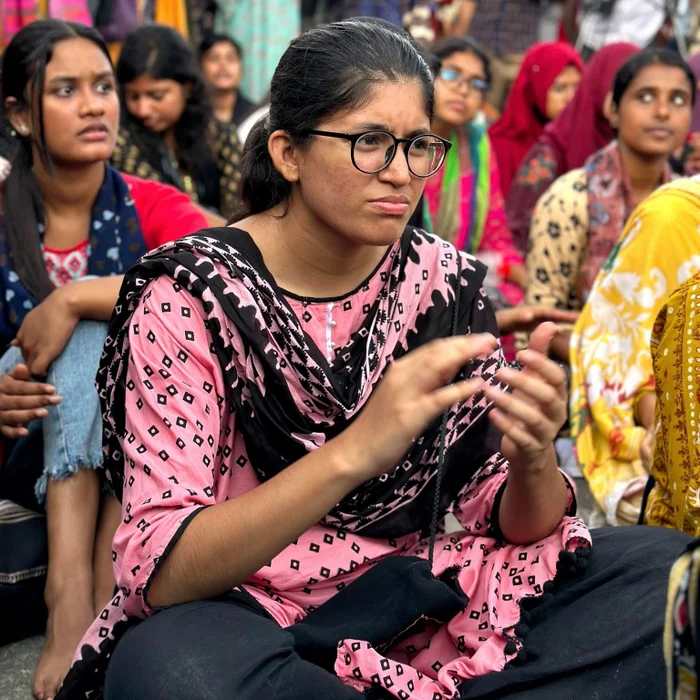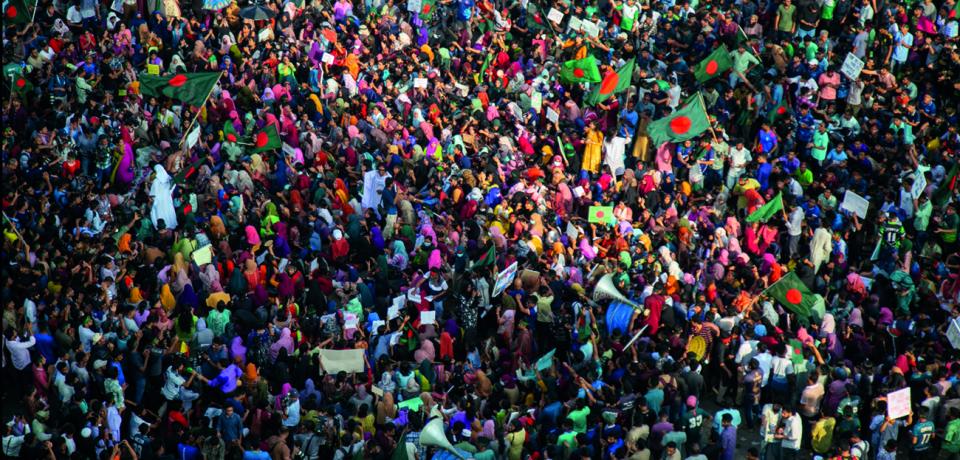One year after the historic student uprising that reshaped Bangladesh’s political landscape, the irreplaceable role of women in these events remains a topic of intense debate.
The movement began with the rallying cries of justice, equality, and freedom, reaching a turning point with the ousting of authoritarian Prime Minister Sheikh Hasina. Today, that revolution faces new challenges.
A Revolution with a Woman’s Face
Images of last year’s protests in Bangladesh captured the world’s attention: young female students in colorful headscarves standing at the frontlines, mothers shielding youth from gunfire with their own bodies, and women activists transforming social media into a tool for mass mobilization. Statistics show that over 60% of participants in nationwide protests were women — an unprecedented figure in the country’s protest history.

Fatema Akhter, a 22-year-old student and one of the movement’s core organizers, recalls:
“We fought not only against political corruption but also against the patriarchal culture that seeks to keep women on the sidelines. Now we must see how far this revolution will deliver on its promises.”
Transitional Government, Unfulfilled Promises
When Nobel Prize–winning economist Muhammad Yunus took charge of the interim government, many hoped for a new era of women’s political participation. Yet, according to women’s rights advocates, tangible change has been minimal:
- Women hold just 20% of cabinet positions in the interim government.
- The long-stalled anti-sexual harassment bill remains unpassed.
- The number of women in local governance roles has risen by only 5%.
Nazneen Haque, a human rights lawyer in Dhaka, warns:
“The women who drove this revolution are now being sidelined in the transition. We’re seeing the same male-dominated structures reemerge in a new form.”
Why Bangladeshi Women Must Keep Fighting
Experts point to three main reasons for the slow pace of change:
- Deep-rooted patriarchal structures that persist even among traditional reformists.
- Prioritizing political stability at the expense of social demands.
- Lack of unified leadership within the women’s movement after the fall of the previous regime.
Still, there are signs of hope: the formation of the Revolutionary Women’s Council uniting 150 independent organizations; the launch of the first women-led online radio station; and a 300% increase in female enrollment in political science programs compared to last year.
The Road Ahead
The Bangladesh revolution proved that women are not just allies but leaders of change. Yet history shows even the most progressive revolutions can push women’s rights to the margins. Whether the “New Bangladesh” will truly make space for half its population will not be decided in politicians’ speeches, but in the same streets that, just a year ago, were battlegrounds for freedom.
Guardian


